Galaxy S25 Edge: In summary
- The S25 Edge is the fourth model in Samsung’s flagship phone range, with its unique selling point being its thin and light design
- On sale now, having been released on 30 May
- Key specs include the S25 Ultra’s 200Mp main camera, a large OLED screen, but a small battery due to the design
The Galaxy S25 family is finally complete (well, apart from the likely upcoming S25 FE), but the core flagship range is finished.
Samsung announced the phone at a special launch event where it provided answers to all the remaining questions, including the price, how long the battery will last, and just how thin it really is.
It’s been a long wait for the S25 Edge after it was teased way back in January with its siblings, but you can finally get your hands on it.
Could it be the start of a new slim phone trend? We’ll have to wait and see, but it seems possible, especially with a rumoured iPhone 17 Air on the way.
Here’s everything you need to know about the new Samsung Galaxy S25 Edge, including its release date, price, specs and features.
You can read our full review of the Galaxy S25 Edge now, plus find out why I think Samsung has missed a trick with the S25 Edge.
When will the Galaxy S25 Edge be released?
In summary
- Officially launched on 12/13 May
- On sale now – release date 30 May
- New ‘Galaxy Club’ scheme
After some delays, Samsung officially unveiled the Galaxy S25 Edge in its entirety on 13 May.
In time zones including Korea and the UK, that is. In the US, it took place on 12 May, as some rumours suggested.
The phone is on sale now, having been released on 30 May.
You can re-watch the Galaxy S25 Edge launch live stream if you want to see how it went down.
In the blog post announcing the launch date, Samsung said, “This is more than a slim smartphone. Every curve, contour and component reflects a breakthrough in precise engineering to create a premium experience worthy of the S series name.”
Anyron Copeman / Foundry
How much does the Galaxy S25 Edge cost?
In summary
- Prices start at £1,099/$1,099
- Sits between the S25+ and S25 Ultra in the range
If you’re keen to get the S25 Edge in your pocket, you’ll need to splash at least £1,099/$1,099.
This will get you the 256GB model and makes it the second most expensive Galaxy S25 model behind the Ultra.
Those wanting 512GB of storage can have it for £1,199/$1,219. There is no 1TB model like the Ultra.
You can buy the S25 Edge now from Samsung, and the firm has a new Galaxy Club scheme to tempt you with perks like money off, free Samsung Care+ and guaranteed trade-in value.

$1099
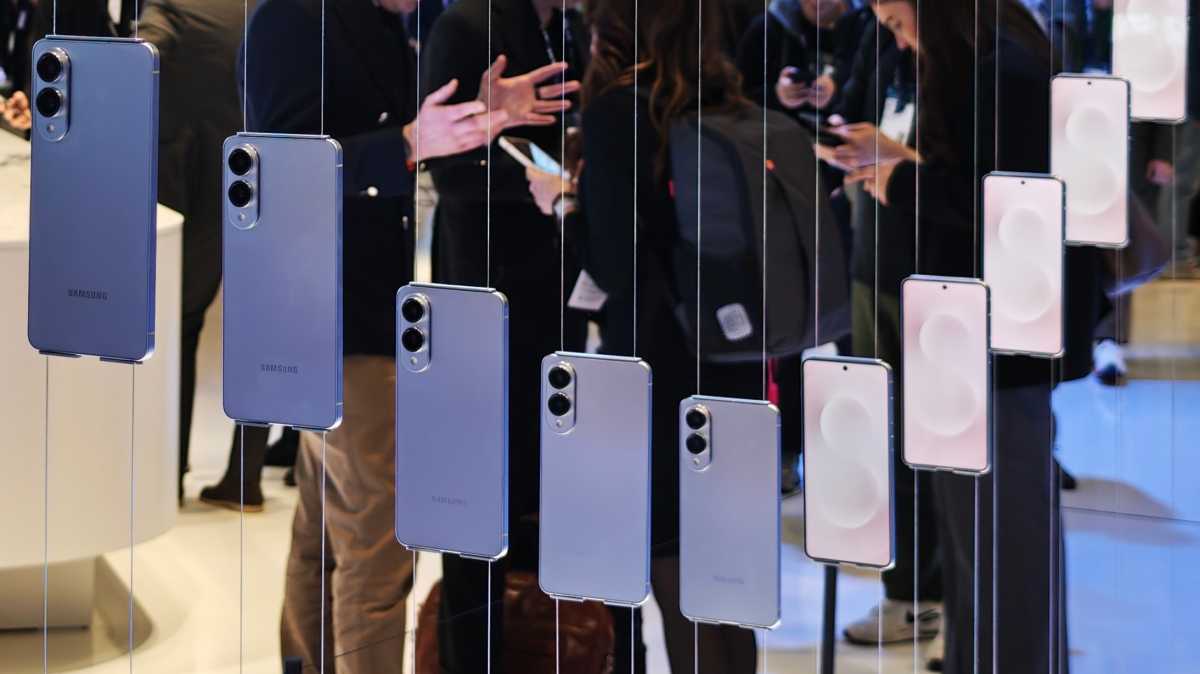
Chris Martin / Foundry
What are Galaxy S25 Edge specs and features?
In summary
- The S25 Edge design highlight is the thin profile, at just 5.8mm thick, with materials including titanium and ceramic
- Features a 200Mp rear camera, complemented by a 12Mp ultrawide camera
- The screen is flat, unlike old ‘edge’ devices from Samsung, and 6.7-inch with an OLED panel and 120Hz refresh rate
- The thin design means the battery is smaller than most phones at 3900mAh and with slower charging than the S25+ and Ultra
Design & Build
Though the phone has some interesting specs, the design is the most important thing about the S25 Edge and the main reason to buy it.
Samsung has called it “an engineering marvel”.
If you’ve been longing for a thinner Galaxy flagship, then your dream has come true as the S25 Edge is just 5.8mm. For comparison, the S25 is 7.2mm and the S25 Ultra is 8.2mm and it’s still IP68 dust and water resistant.
It’s quite a feat of engineering considering some of the specs that Samsung has managed to put in the phone. It’s just slightly less impressive with the context of foldables such as the Oppo Find N5 being just 4.21mm or Samsung’s own Galaxy Z Fold 6 at 5.6mm.
Still, it’s extremely thin for a regular format phone and could well be the first of a new trend.
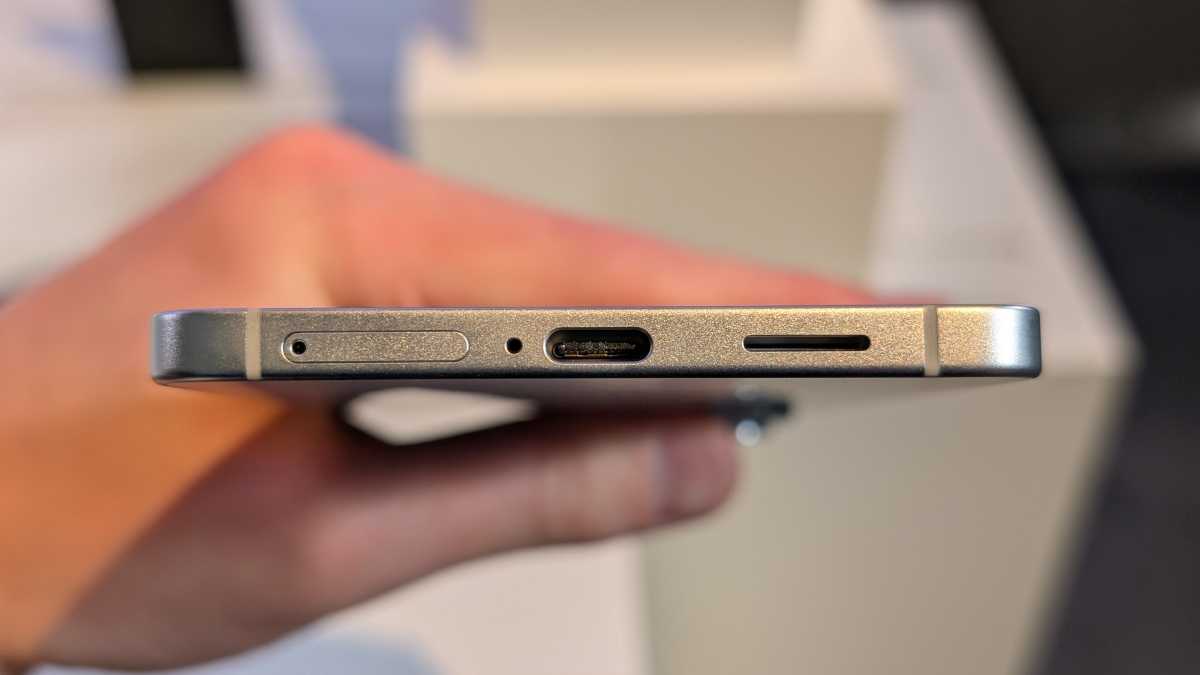
Anyron Copeman / Foundry
The thin design does have some downsides, which we’ll address as we go, but the most obvious is the way Samsung has had to set the SIM card tray, microphone, USB-C port and speaker off-centre.
Granted, you won’t look at those much but it may still bug some users. The big advantage of the thin design is how light the S25 Edge is.
At just 163g, it’s far lighter than 218g Ultra and 190g Plus models.
The regular S25 is actually marginally lighter at 162g, but it has a much smaller screen, so if you want a big display without having to carry around a brick, then this might be it.
There are three S25 Edge colours to choose from: Titanium IcyBlue, Titanium Silver, and Titanium Jetblack.
These give away that the phone features titanium just like the Ultra. The frame is made from the light but durable metal, while the display is covered by something none of the other S25 models have – Gorilla Glass Ceramic 2.
This isn’t found on the back, which is also glass.
Battery & Charging
The thin design of the S25 Edge impacts, as you might imagine, the size of the battery is 3900mAh.
That’s small compared to almost any modern smartphone, though it’s only 100mAh off the regular Galaxy S25 for context.
It would have been nice to have seen Samsung use modern SiC (silicon carbon) battery tech to fit a larger battery in the same space (like the OnePlus 13), but we’ll likely have to wait for the Galaxy S26 series for that.
Another downside here is that the S25 Edge has 25W wired charging and 15W wireless. That’s slower than the S25 Ultra’s 45W charging, and is still dubbed “super fast” but matches the regular model.

Anyron Copeman / Foundry
Up to 55% in 30-minutes is quoted with a 25W charger. It’s possible Samsung didn’t go any higher as the design wouldn’t have coped with the additional heat and didn’t want another Galaxy Note 7 situation.
It’s a worrying combination of things and could make the phone difficult to recommend, especially with the expected price.
Samsung says it will last 24 hours of video playback or “all day”, but we’ll test the battery in the real world when we get a review sample.
Screen
The screen on the S25 Edge is nothing overly exciting. It no longer means the phone has curved edges, despite that being Samsung’s previous usage for the ‘edge’ moniker.
As expected, the display is 6.7-inch, the same as the Galaxy S25+ in size, with a very slim bezel.
The phone uses an OLED panel with a Quad HD resolution and 120Hz refresh rate. The peak brightness is 2600 nits and it also features an Adaptive Vision Booster
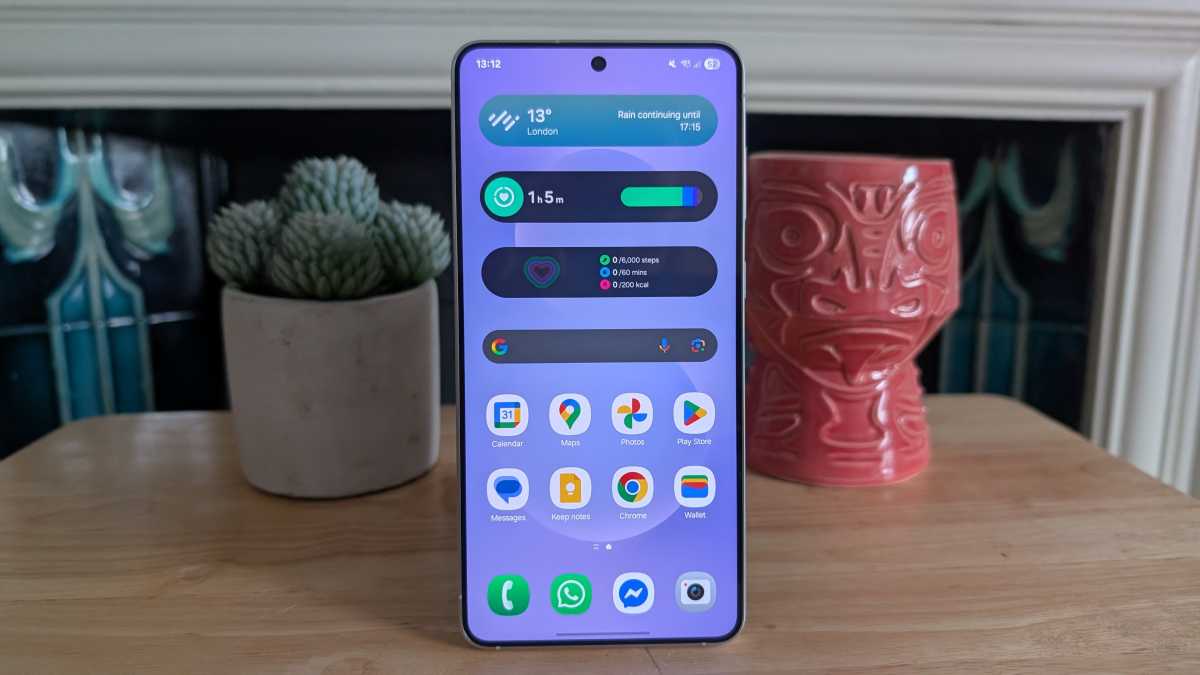
Anyron Copeman / Foundry
Cameras
We knew in advance that the Galaxy S25 Edge would only come with two rear cameras as Samsung already showed off the design.
Samsung confirmed just ahead of the launch event that the main camera would be the same 200Mp shooter found on the Galaxy S25 Ultra.
“Even with its slim form, the Galaxy S25 Edge’s 200MP wide lens continues Galaxy’s iconic camera experience, delivering pro-grade capabilities to intuitively capture the world around you. And thanks to Galaxy AI, the camera transforms into a smart lens that helps recognize what matters to create new memories,” said Samsung.
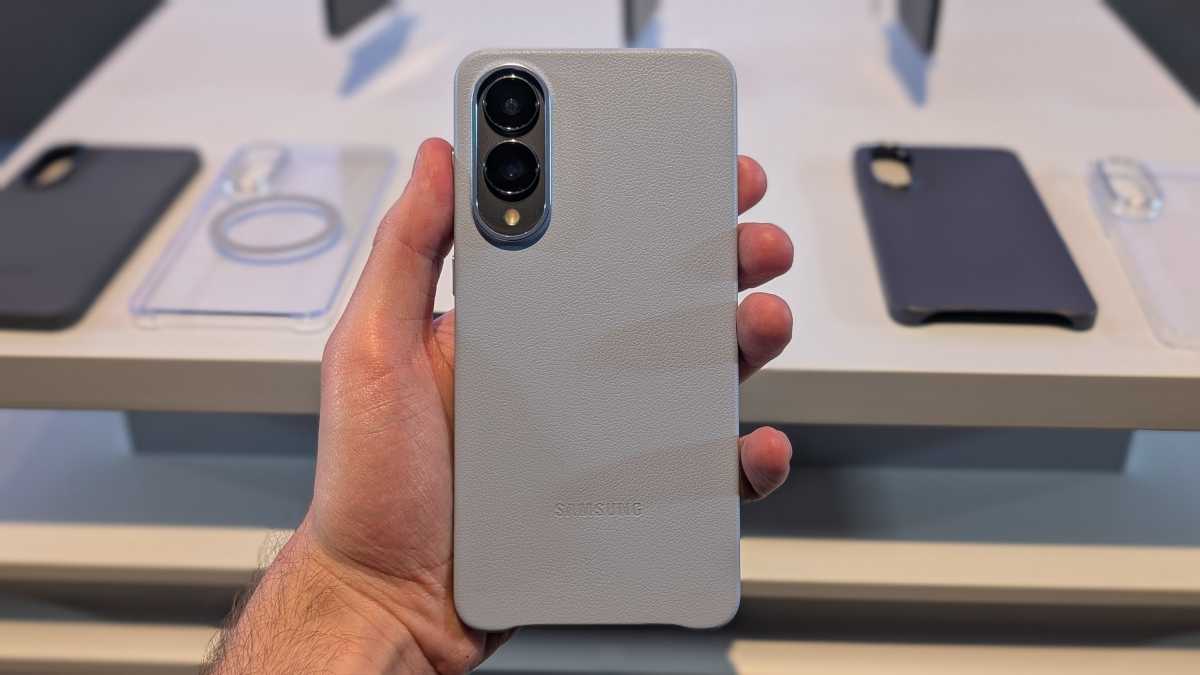
Anyron Copeman / Foundry
As rumoured, the secondary rear camera is a 12Mp ultrawide which has a macro mode and autofocus. So, you don’t get a telephoto camera here.
Meanwhile, the front-facing camera is also 12Mp.
Samsung says the nightography on the Edge is 40% better than the regular S25 and it can record 8K resolution video with ‘virtual aperture’.
Camera software features include Audio Eraser, Generative Edit and Filters.
Performance
It’s no surprise that the S25 Edge is powered by the same Qualcomm Snapdragon 8 Elite chipset as its stablemates – the overclocked ‘for Galaxy’ version.
This is paired with 12GB of RAM, no matter which model you pick and the choice is just 256- or 512GB of storage (no 1TB option like the Ultra).
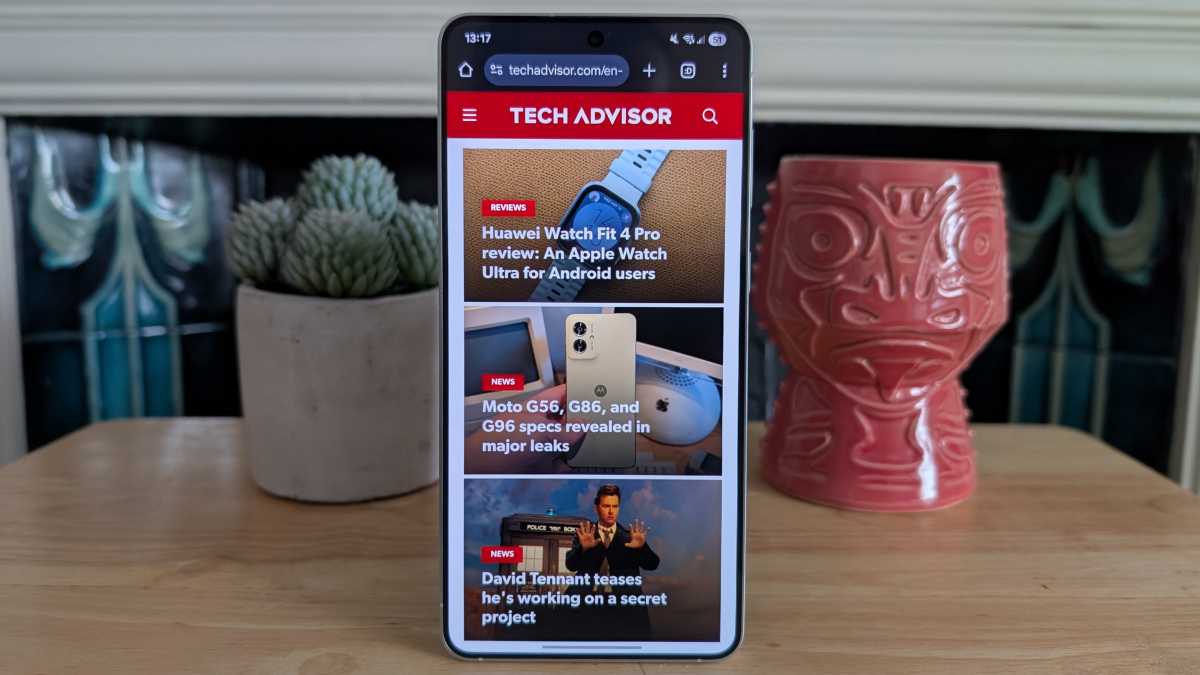
Anyron Copeman / Foundry
Samsung says the Edge features ‘Tailored TIM’ (thermal interface materials) for optimised heat dissipation.
Software
You can probably guess but the S25 Edge comes with Android 15 and Samsung’s One UI 7.
All the same Galaxy AI features as the other models are here, and there’s also Gemini Live and Google’s Circle to Search.
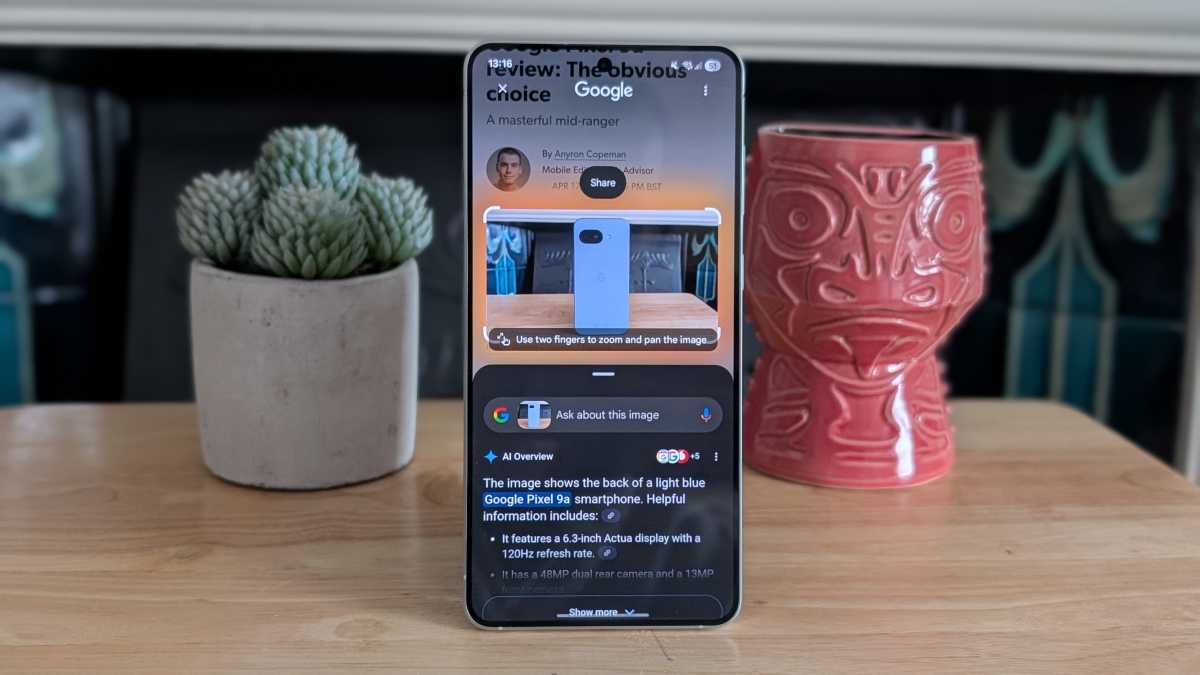
Anyron Copeman / Foundry
Samsung’s software promise remains market-leading alongside Google Pixel phones with seven years of OS and security updates.
































